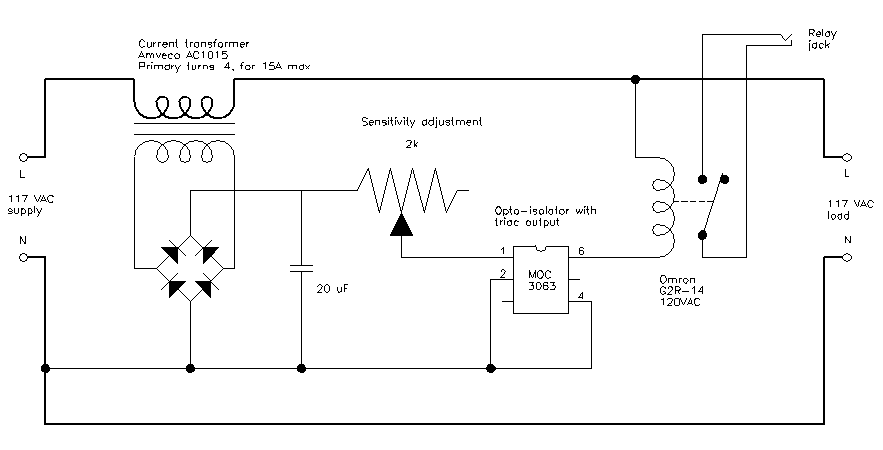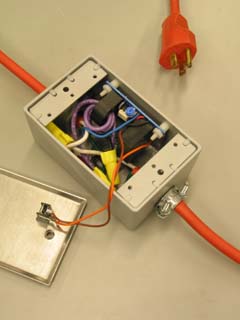
I built these current detectors to automatically switch a dust collector which clears woodworking machinery. Each machine is equipped with a blast gate on which is mounted a microswitch which closes when the gate is open, in series with a relay activated by either this current detector or by a simple relay activated by the machine's power switch.
Inspiration and ideas for this came from Robert Reid's two articles in Woodwork Magazine: "Magnetic Starters" in October 2004, and "Automating Your Dust Collector" in the February 2005 issue. I wanted a higher current capacity than his 12A version, but with good sensitivity. The circuit presented here is rated at 15 Amps, and is sensitive to about 1 Amp. You can buy a discrete bridge rectifier, or make your own using diodes. Reid just used a single diode, which is probably sufficient. Orient the current sensitivity pot on the edge of the circuit board so that it can be mounted for easy access. Watch out that you put your capacitor in the right way; there's a positive and negative lead, marked on the case.
 |
| Click to view Parts List |
 |
| Click to expand image |
If you substitute other relays, make sure that they don't draw more than the MOC3063's output triac drive capability of 60 mA, which translates to a relay having coil resistance greater than 2k Ohms. If that's not possible, you can put another external discrete triac (e.g. the 1A-capable L601E3) before the relay, as in the magnetic starter with current detector.
Wire the power paths (shown with thicker lines on the schematic) using 16 gauge wires, or 14 gauge to carry 20 Amps. To handle the higher current, use only three winds through the current transformer, or choose a higher-current transformer such as the Amveco